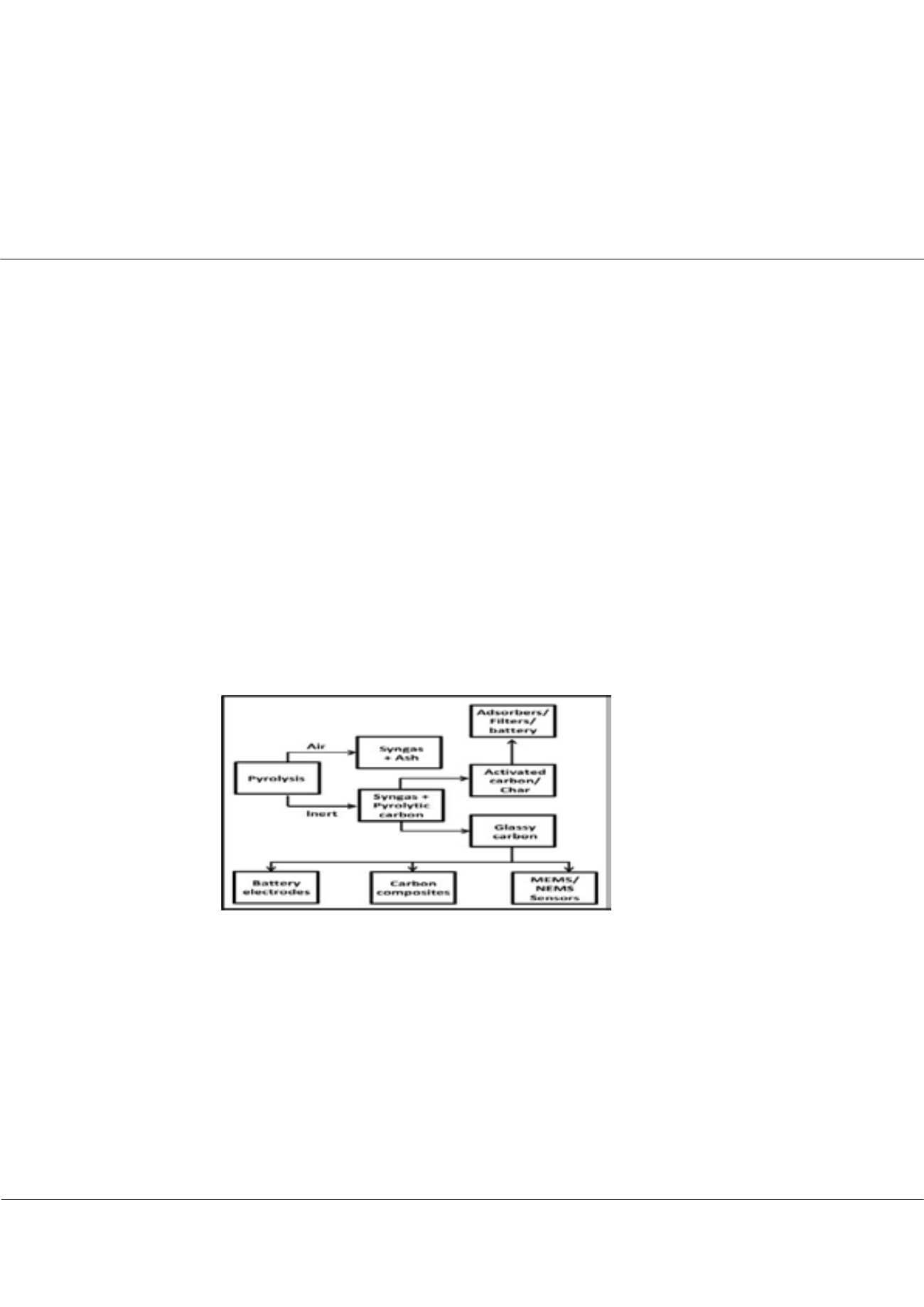

Page 82
conferenceseries
.com
Volume 9
Journal of Bioremediation & Biodegradation
ISSN: 2155-6199
Biofuel Congress 2018 &
Biomass 2018
September 04-06, 2018
JOINT EVENT
September 04-06, 2018 | Zurich, Switzerland
13
th
Global Summit and Expo on
Biomass and Bioenergy
&
12
th
World Congress on
Biofuels and Bioenergy
Waste-derived carbon: structure, properties and applications
Swati Sharma
Karlsruhe Institute of Technology, Germany
P
yrolysis or controlled heating of biodegradable and non-biodegradable polymers is an emerging technique for their safe
decomposition and possible recycle. The mixture of volatile products resulting from pyrolysis is typically collected as the
‘syngas’, which is further separated by distillation into gaseous products to be used as fuels and precursors for the synthesis of
various high molecular weight organic compounds. However, one major challenge associated with waste polymer pyrolysis
is the handling of the residual solid byproducts, often designated as ‘ash’. In our group we develop novel pathways to pyrolyze
polymers such that the solid residues are useable forms of elemental carbon rather than ashes. Depending on the surface
properties and the extent of crystallinity these carbon materials are further classified as glassy or activated. While activated
carbon, often obtained from cellulosic materials such as papers waste, is employed in various industry-scale adsorber and
filtration applications; glassy carbon is extensively used in miniaturized devices such as micro/ nano electromechanical
systems (MEMS/ NEMS), battery and supercapacitor anodes, sensors and cell culture scaffolds owing to the fact that it can be
derived from lithographically patterned polymers. This talk will be focused on various aspects of pyrolytic carbons including
(i) the structure-property relationship in pyrolytic carbons at bulk and nano-scale, (ii) influence of pyrolysis conditions on
the microstructure of resulting carbon, (iii) characterization and classification of carbon obtained from polymers of different
chemical classes, and (iv) unconventional applications of pyrolytic carbons. Pyrolysis efficiency, state-of-the-art characterization
techniques such as in situ electron microscopy will also be touched upon.
Recent Publications
1. Erwin Fuhrer, Anne Bäcker, Stephanie Kraft, Friederike J. Gruhl, Matthias Kirsch, Neil MacKinnon, Jan G. Korvink, Swati
Sharma. 3D Carbon Scaffolds for Neural Stem Cell Culture and Magnetic Resonance Imaging. Advanced Healthcare
Materials, 2017, 1700915.
2. Anna Zakhurdaeva, Philipp-Immanuel Dietrich, Hendrik Hölscher, Christian Koos, Jan G. Korvink, Swati Sharma.
Custom-Designed Glassy Carbon Tips for Atomic Force Microscopy. Micromachines, 8(9), 2017, 285.
3. Swati Sharma, Arpad Rostas, Neil MacKinnon, Stefan Weber, Jan Korvink. Micro and nano patternable magnetic carbon.
Journal of Applied Physics, 120, 2016, 235107.
4. Gerald Göring, Philipp-Immanuel Dietrich, Matthias Blaicher, Swati Sharma, Jan G. Korvink, Thomas Schimmel, Christian
Koos, Hendrik Hölscher. Tailored probes for atomic force microscopy fabricated by two-photon polymerization. Applied
Swati Sharma, J Bioremediat Biodegrad 2018, Volume 9
DOI: 10.4172/2155-6199-C1-014
















